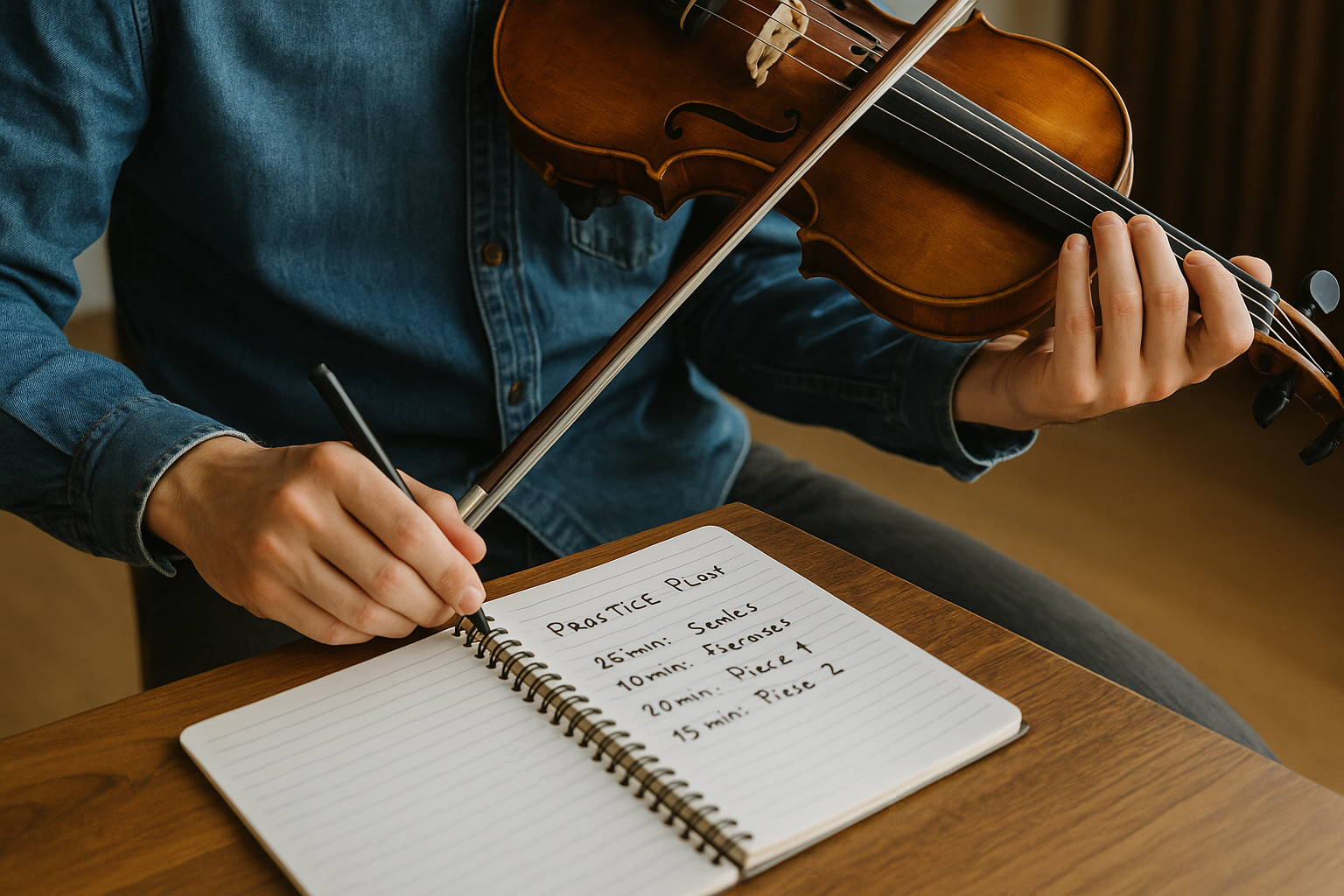One of the most common questions among music students is how to balance practice between technique and repertoire. On one side, technique provides the foundation: scales, finger exercises, breath control, articulation, and rhythm drills. On the other, repertoire—the songs and pieces you want to play—is the reason most people study music in the first place. Focusing too much on one area often leads to frustration. Too much technique without repertoire feels boring, while too much repertoire without technique can leave you stuck when the music gets challenging.
Finding the right balance is essential for long-term growth and enjoyment. In this article, we’ll explore why both areas matter, common mistakes to avoid, and practical strategies for dividing practice time effectively.
Why Technique Matters
Builds the Foundation
Technique exercises strengthen the physical and mental skills needed to play music fluently.
Increases Efficiency
With strong technique, difficult passages become easier and less frustrating.
Prevents Injury
Good posture, breathing, and finger mechanics reduce the risk of strain.
Expands Possibilities
The better your technique, the more musical challenges you can handle, from fast runs to dynamic control.
Why Repertoire Matters
Provides Motivation
Most people learn music to play songs they love. Repertoire keeps practice enjoyable.
Teaches Real Application
While exercises are abstract, repertoire shows how theory and technique come together in real music.
Builds Performance Skills
Repertoire prepares you for recitals, gigs, or even casual playing for friends.
Strengthens Memory and Expression
Working on pieces helps develop musical phrasing, interpretation, and memorization.
Common Mistakes in Balancing Practice
- Neglecting Technique
Some students only practice songs, which leads to hitting walls when pieces get harder. - Neglecting Repertoire
Others spend hours on exercises but rarely learn actual music, which can sap motivation. - Practicing Without Structure
Jumping randomly between scales and pieces without a clear plan reduces efficiency. - Overestimating Time
Trying to master everything in one session often leads to burnout.
How to Divide Practice Time Effectively
Step 1: Determine Your Goals
Your ideal balance depends on your priorities:
- Preparing for exams? You may need more technique.
- Learning songs for fun? Repertoire should dominate.
- Aspiring to perform professionally? A balanced mix is essential.
Step 2: Use the 50/50 Rule (for Most Students)
A good starting point is dividing practice time evenly: half on technique, half on repertoire. Adjust as you grow.
Step 3: Create a Time Budget
If you have 60 minutes, for example:
- 25 minutes: technique (scales, exercises, rhythm drills).
- 30 minutes: repertoire.
- 5 minutes: cool down or free play.
Step 4: Prioritize Weaknesses
If your technique lags, devote more time to exercises. If you have exams or performances soon, focus more on repertoire.
Step 5: Use Short, Focused Blocks
Instead of long stretches, divide practice into smaller, focused blocks. For example:
- 10 minutes scales.
- 10 minutes finger drills.
- 20 minutes learning a piece.
- 10 minutes refining details of another piece.
Strategies to Make Technique Practice Engaging
- Apply Exercises to Songs: Practice scales in the key of your repertoire.
- Use Rhythmic Variations: Play exercises with different rhythms to stay engaged.
- Challenge Yourself: Set small technical goals, like faster tempos or smoother articulation.
- Record Progress: Track improvements to stay motivated.
Strategies to Make Repertoire Practice Effective
- Break Down Sections: Don’t always play from start to finish. Focus on small, challenging parts.
- Slow Practice: Play difficult passages slowly until accuracy is solid.
- Use Repetition Wisely: Repeat with intention, not mindlessly.
- Add Expression Early: Don’t wait until you’ve “mastered” notes to practice dynamics and phrasing.
Example Practice Plans
For Beginners (30 minutes a day)
- 10 minutes: scales and finger independence.
- 15 minutes: one simple song.
- 5 minutes: review or free play.
For Intermediate Students (1 hour a day)
- 15 minutes: scales, arpeggios, rhythm exercises.
- 20 minutes: technical drills (finger independence, breath control, articulation).
- 20 minutes: current repertoire.
- 5 minutes: review older pieces.
For Advanced Players (90 minutes or more)
- 20 minutes: warm-up and scales.
- 20 minutes: advanced technical studies (etudes, drills).
- 40 minutes: main repertoire pieces.
- 10 minutes: sight-reading or improvisation.
Adjusting Over Time
Your balance will shift depending on your stage of learning:
- Beginners: Focus slightly more on technique to build basics.
- Intermediate: Equal split between technique and repertoire.
- Advanced: More time on repertoire but with consistent technical maintenance.
The Mental Side of Practice Balance
Avoid Guilt
Don’t feel guilty for enjoying repertoire. Playing songs is not “less serious” than exercises—it’s essential.
Stay Flexible
Some days you may need more technique, others more repertoire. Listen to your needs.
Enjoy the Process
Remember that both sides feed each other. Technique makes repertoire easier, and repertoire gives purpose to technique.
Long-Term Benefits of Balanced Practice
- Solid technical foundation.
- Diverse and enjoyable repertoire.
- Faster, more consistent progress.
- Greater confidence in performance.
- Lifelong motivation to continue learning.
Final Thoughts: Harmony Between Skill and Expression
Balancing technique and repertoire is like balancing nutrition: you need both to stay healthy. Too much of one leads to imbalance, but the right mix builds strength, skill, and joy.
The secret is not finding a rigid formula but adjusting thoughtfully to your goals, strengths, and challenges. By dividing your time wisely, you’ll grow as both a skilled technician and an expressive musician.
The next time you sit down to practice, ask yourself: Am I nurturing both sides of my musical journey? If the answer is yes, you’re on the path to balanced, fulfilling progress.
